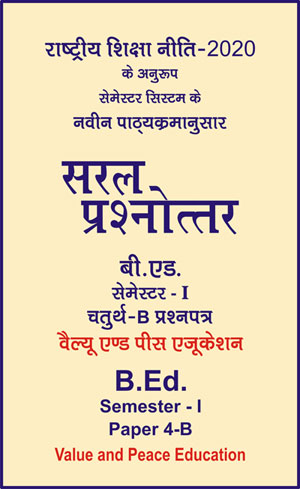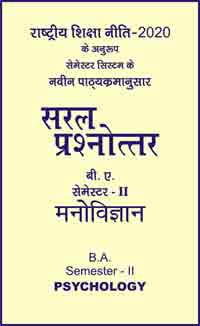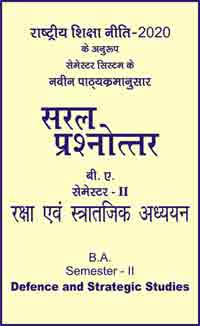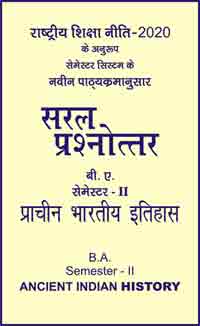|
बी एड - एम एड >> बी.एड. सेमेस्टर-1 प्रश्नपत्र-IV-B - वैल्यू एण्ड पीस एजुकेशन बी.एड. सेमेस्टर-1 प्रश्नपत्र-IV-B - वैल्यू एण्ड पीस एजुकेशनसरल प्रश्नोत्तर समूह
|
5 पाठक हैं |
||||||
बी.एड. सेमेस्टर-1 प्रश्नपत्र-IV-B - वैल्यू एण्ड पीस एजुकेशन (अंग्रेजी भाषा में)
Question- What are the factors and changes of change in the family?
Answer -
Family, traditional as well as modern, has been undergoing changes under the impact of following factors :
(i) Industrialization (ii) Urbanization (iii) Western culture (iv) Modern education (v) Legislative measures (vi) Quarrels in the family (vii) Emergence of various associations to perform different functions of family.
The structure i.e., composition and inter-relationships within the family have undergone significant changes under the impact of the above mentioned factors. The functions of family too have changed significantly in the modern era. The changes are discussed below :
(1) Size of the family has been considerably reduced under the impact of urbanization and industrialization. In urban areas, it is very difficult to find large accommodation for large-sized families. Moreover, the income of an individual is not sufficient to meet the requirements of large families. Hence, families in modern times consist basically of husband, wife and their unmarried children. Such families are known as nuclear families.
(2) Rise of nuclear families has changed the inter-relationship among its members. The members of nuclear family interact with each other on more equal terms. They no longer have to follow the dictates of the elders blindly. In nuclear families, the husband, wife and children discuss their problems and likes and dislikes with each other. The decisions regarding family matters and individual’s life are taken collectively.
(3) Sometimes, conflict between older and younger generation is seen in the family because of their inability to understand each other’s point of view. As a result, the level of discipline and devotion towards each other has declined.
(4) Some parents do not take care of children adequately because of their jobs, busy schedule or desire of freedom from responsibilities of children.
(5) Boys and girls do not find it necessary to marry the mates selected by their parents. They choose their marital partners on the basis of mutual attraction, career and occupational similarly, financial benefits and so on. Class, caste and compatibility between family-values are no longer very important.
(6) Kinship-ties are not very strong in today’s family set-up. The family members have become more self-centred and self-reliant. They do not spare much time, energy and money for their relatives or kinsmen.
(7) The families have become child-centric. Parents spend most of their time, energy and money on their children. Due to break-up of joint family, they no longer have to compulsorily contribute towards the welfare of brothers and sisters. The entire life of the parents revolves around their children and all their future plans are made keeping their children in mind.
(8) The functions performed by the family have been reduced to a substantial extent. Other agencies which cater to the needs of the family members have come up although their roles are specific and not holistic as is the case with the family. The creche, day-care centres for children, old-people’s homes, nursing homes, hosteles, restaurants, banks clubs and so on, are a few examples of agencies which have taken up varied family functions thereby reducing the ambit of its reach and relevance. However, the emotional support and the selfless devotion of family members are still hard to find elsewhere.
(9) Family is no longer the unit of production in most of the societies. With the arrival of factory system of production, home is not the place for the production of goods. As a result, family members have to look for jobs outside their homes. This change has increased the physical and mental distance between family members.
(10) Family is facing the problems of instability in western societies. Separation and increasing rate of divorce due to mutual disagreement has become common. This has put maximum emotional and social strain on children of divorced parents. They don’t have anyone to support them in their formative years. Those parents who take care of children after divorce also face severe strain on their time and energies.
(11) Some couples are living together without getting married as in western countries. They fear that if they get married to each other, then it will sooner or later result in divorce. Such living together without marriage is termed as a live-in-relationship or cohabitation. This is an alternative to family life in their view.
(12) Some married and employed couples are opting not to have children despite sufficient financial stability. They consider children as a burden on themselves. Such families are termed as DINK (double income no kids) families.
(13) In Israel, a unique family system known as Kibbutz is found. A Kibbutz is a community of families and individuals which co-operate in the raising of children. The children reside in Children Homes away from parents. Each Kibbutz operates as a single household of 50 to 2000 people where children are treated as the responsibility of the whole community while the parents live in separate residences. The children spend weekends with their families.
However, in spite of structural and functional changes, the family still plays a significant role in ensuring socialization of children and providing emotional support to its members. The task of procreation and upbringing of children is done most satisfactorily by the family only. The psychological satisfaction and social respect earned through marriage and successful family life is considered unparallel in terms of quality. As a result, the family remains a universally indispensable institution.
|
|||||













